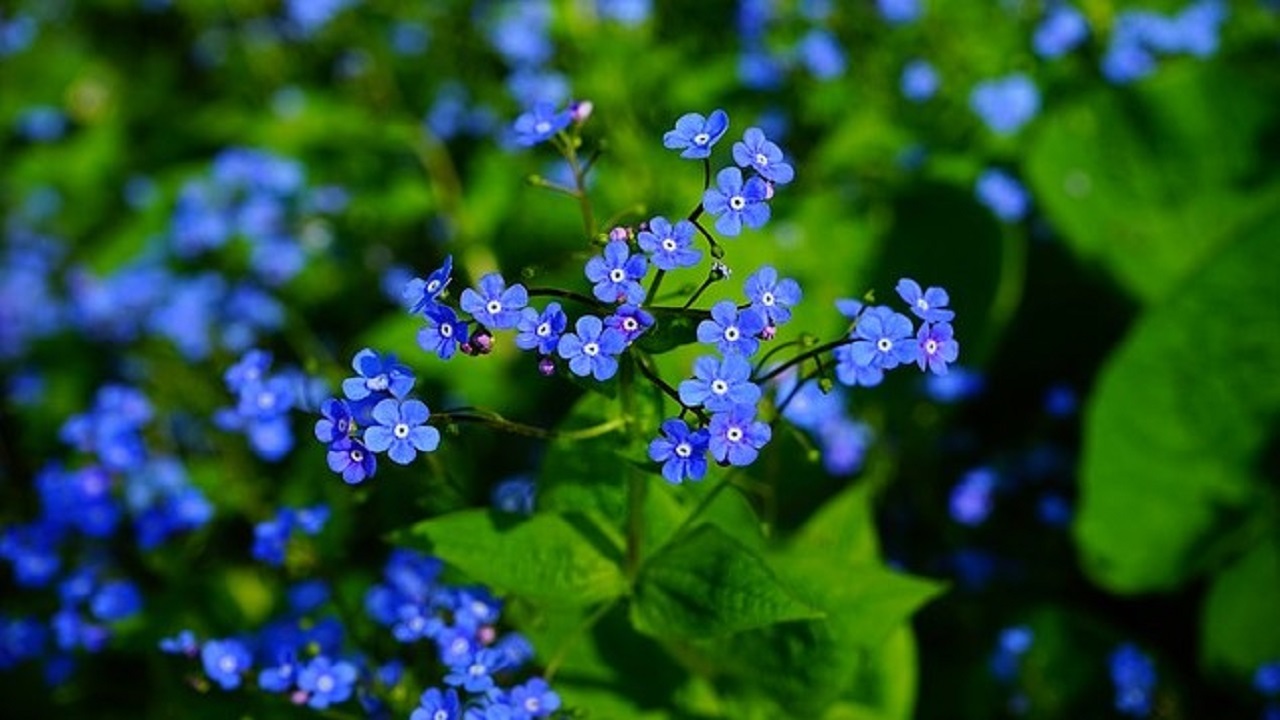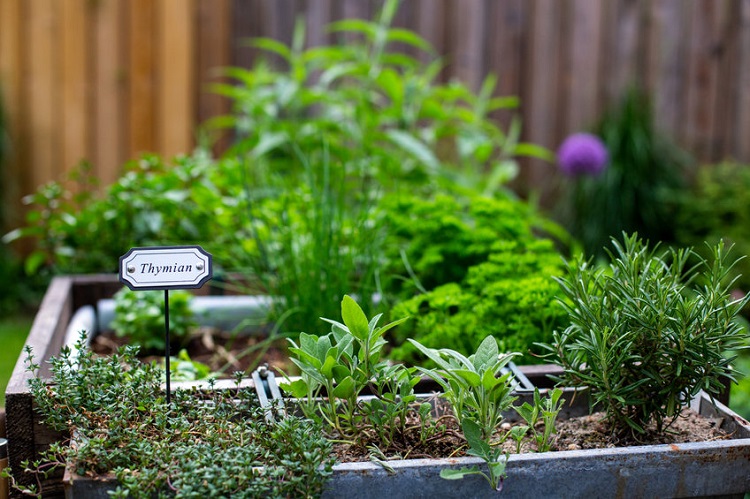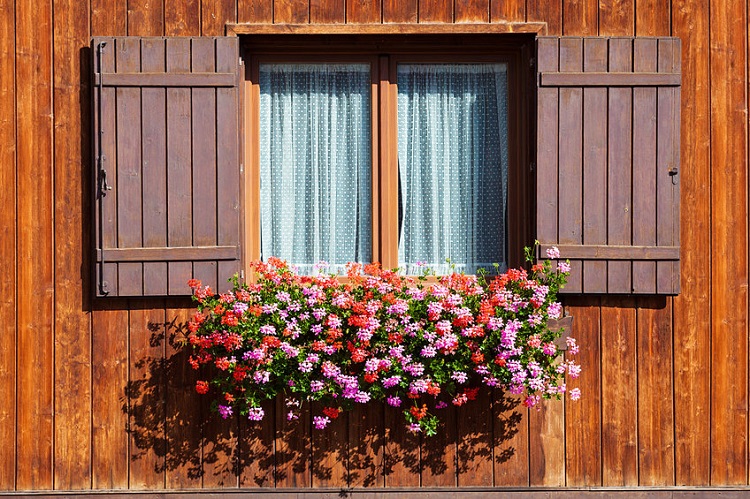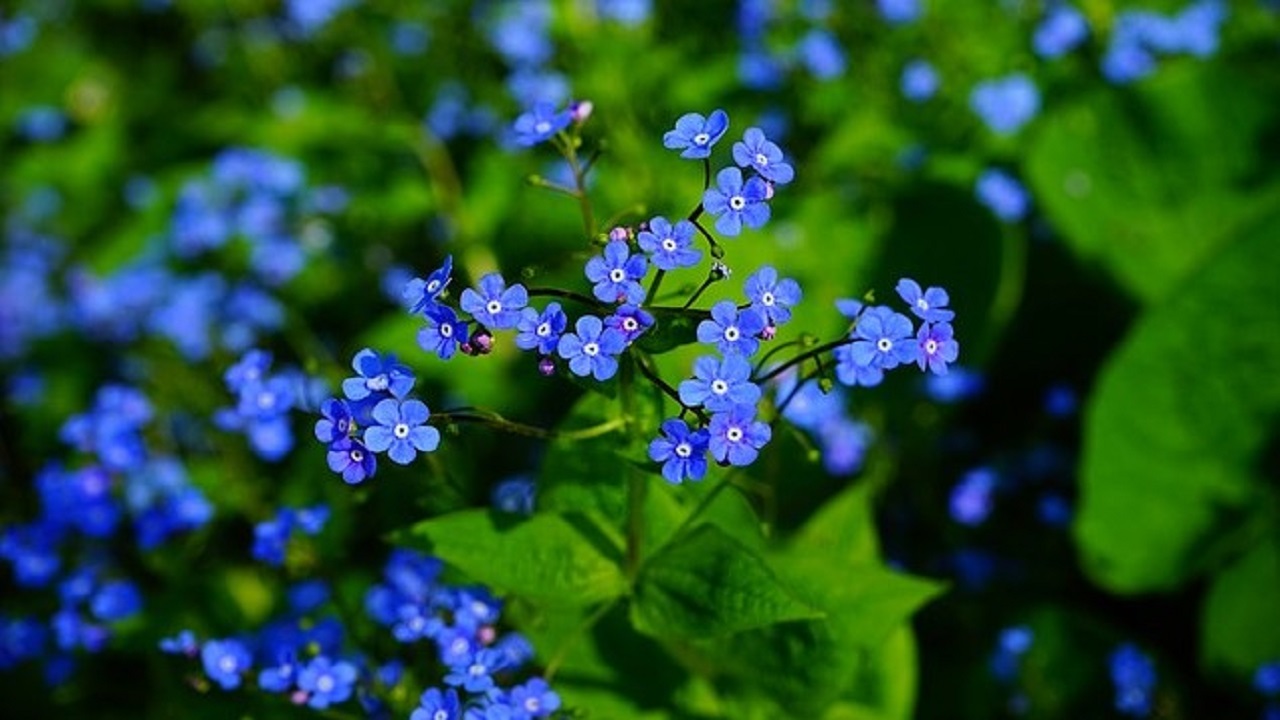When spring arrives, not only our garden but our hearts blossom. This is the time when our attention catches momentum, and we want to surround ourselves with as many wonderful flowers as possible. The perfect solution for this is a balcony box, even if we have a garden and even if we only have one balcony.
1. Here’s how to choose the right balcony box
Balcony boxes can now be purchased in a myriad of sizes, colors and shapes, but it is not only our taste that may be relevant when buying them. Moreover, it does not hurt to think about which one best suits the needs of our plants.
The most important thing is that it is made of strong material, and it will also be exposed to the sun and storms. Their anchoring should also be taken seriously, as they can cause damage and injury even if they fall from the ground floor, but if they fall from the upper floor balcony due to a storm, it is better not to think about the consequences.
Balcony box is the decoration of your balcony. Picture 123rf.com
Small boxes can be tempting because they take up so little space and we can even plant flowers in them with variety, but these plants have much less room and can burn out their roots sooner.
In terms of materials, we have endless options of balcony boxes. Terracotta pots that have been burnt are really very showy, but unfortunately they can easily crack and cannot keep their color for long due to the sun. In addition, the water from them evaporates much sooner, so the plants in them need to be watered more often.
Ceramic or terracotta pots look really great on the balcony, but unfortunately the goods are very loud. Many imitations are available, but their quality is far from the same as the original dishes. It is very easy to tell which is the original and which is the copy, because a real clay pot weighs quite a lot.
The most popular are variegated plastic balcony boxes, where size is the most important thing, because if you choose too small, the roots of the plants will not get enough space and therefore may burn faster due to the heat.
Wooden boxes on the balcony are also nice, but they need to be handled, otherwise they will quickly crack as a result of watering. The roots of plants can breathe well, do not overheat and can provide an appearance that is very close to nature.
However, it is not recommended to use metal chests, even if they are very beautiful. They can heat up very quickly in the scorching sun, which is not good for flowers in them. In addition, if you do not choose good quality, it will start to rust easily.
You can also produce herbs and vegetables in the balcony box. Picture 123rf.com
Just as fashion is constantly changing, there are always new balcony boxes in different colors, types and materials, but if they have been installed well since last year, it is not necessary to replace them. The real decoration will be the beautiful flowers in it anyway.
2. Keep this in mind when planting
If we buy new boxes, we don’t have to clean them, however, if we want to use the old boxes, we have to clean them thoroughly. If there is any soil left in it, pour it in and then fill it with good quality flower soil.
It is not worth saving on earth, because this is the basis of everything. If we plant flowers in soil that is not of good quality, they will certainly not be able to bloom as beautifully as if we provided them with suitable flower soil for them.
We can make the potting soil ourselves using good quality soil, manure or compost. The point is that AVIt is loose and has good water permeability. The potting soil mixed with compost is especially good if we are growing mature seedlings in the balcony box. meIt is not necessary to give a nutrient solution to growing plants for 3-4 weeks after planting.
Since there are many plants in the balcony box next to each other, it is important to consider which of them have the needs and put the same needs in one box. For example, don’t grow geraniums in a cage with a drought-loving plant because neither will have a good neighborhood.
It’s a good idea to put clay granules in the box to absorb a lot of moisture, but it’s also important to have holes in the bottom of the box where excess irrigation or rainwater can flow in. If the box is in a place where it may be exposed to rain, always make sure that there is no water stuck in it.
Plants that require special land should be planted in separate pots to get what they need. Hydrangeas, or azaleas, are also such because they prefer specifically acidic soils. But don’t just grow ornamental plants where there are many vegetables and We can also grow herbs in the box.
3. Planting plants in balcony box
The bottom of the box should always be perforated and it is worth it as the bottom layer Put pebbles or pieces of crushed clay in it so that the water does not stop in it.
Then wet the roots of the plants to be planted by placing them in a container filled with water. The roots can absorb themselves well with the water. Then fill the box halfway with earth and place the plants on it. Fill in the area around the plants with potting soil, which should be pressed lightly to keep the air out. Then water the plants well.
The location of the house should also be taken into account when placing flowers. Picture 123rf.com
There is no need to replenish the nutrient solution for a month after planting, since the roots of the plants were placed in good-quality soil. After this, the nutrients will be required to be regularly replenished, both in liquid and solid form. You can even put a feeding tablet in the ground, which will provide the plants with needed nutrients for a good few months.
4. Plant these plants in March
In early spring, it is worth planting plants in the balcony box that are not damaged by frost. This is a poof, daisy or don’t forget me. Frost-sensitive plants can be planted later.
It is important to know the needs of the plants and place them in the different windows of the house accordingly. The Plants that need a lot of light, such as geranium, petunia or calendula, should be placed in the eastern or southern windows. thatShade-like plants such as begonias, pistachios, ferns and amber should be placed in west facing window boxes.
to turn down
There are endless color variations of tulips, which makes them a very popular plant in small gardens as well. Its large flowers have a smooth surface and decorate balcony tanks really nicely. Prefer a bright or semi-shaded location. Nutrient-rich soil with good water management is important for a mare. Pansy requires moderate watering.
Easily propagated from seed, it can be done in early spring. The Seedlings grown from seeds can be transplanted after 6-8 weeks, and we can enjoy their flowering 12 weeks after planting.
The horned pansy is a short-lived bushy ornamental plant. Its flowers are 2-3 cm in diameter and open from March to June. It is advisable to remove wilted flowers, as this will give the plant more energy to grow new flowers.
The tricolor pansy is an annual plant that produces very beautiful flowers. It is also very beautiful when grown in a balcony box and rock garden. flowers sThey open in yellow, blue, purple and white. Prefers sunny and semi-shady places.
The sexy pansy is a bushy perennial plant that graces our garden with its brightly colored flowers from mid-spring to early summer. It requires a lot of water and light, so it is important to water it regularly.
daisy
The chrysanthemum flower certainly did not get this name by chance, because it is a truly beautiful flower. Garden chrysanthemum belongs to the family of nests and is native to Europe and Asia Minor. This little flower is very popular all over the world. The French call it Easter, and the Germans refer to it as the “geese flower”, noting that it often opens onto geese pastures.
Blue forget it, don’t forget it. Forgetting is also a flower for remembrance. Photo: Pixabay
Chrysanthemum is a perennial herbaceous plant, but it is grown as a biennial plant, that is, it is planted in one year and opened in another.
Its flowers bloom mostly in white, pink and yellow and can be 15-40 cm in height. so far It blooms until June. Like the shady sunny place However, it is difficult to tolerate drought, so it is important to water it regularly. It needs feeding every two weeks and removing its open flowers.
Perennial varieties can be propagated by division in spring or fall, while Biennial varieties are propagated by sowing. The seeds should be sown in June and July and should not be covered because they germinate in the light. However, always keep the soil moist. After 6-8 days the seeds germinate and after 3-4 weeks the plants are cultivable.
forget that
“Blue forget it, don’t forget it,” said my grandmother many times, who was a favorite of this beautiful little flower. It is no coincidence that many people inspire and welcome them in their garden, in addition to being beautiful, it is very easy to care for them. It is a biennial plant that grows in the first year but produces flowers only in the second year. The forget-me-not shrub grows to a height of about 25 cm. It blooms from late April to late May. The most famous of them is the blue version, but it can also have white or pink flowers. do not forget mePropagation is by seed, where plants die after flowering and new plants sprout from their scattered seeds.
Forget-me-nots prefer a place in the shade, because the flowers bloom quickly due to strong sunlight. Humidity , It requires nutrient-rich soil, so it is worth mixing compost into your soil before planting. Adequate water is important to forget, so water it regularly. However, make sure that the plant is not wet and that you water only the soil.
If you want to propagate from seeds, it is worth spreading the seeds in late July or early August. However, the plants are covered in winter against frost. In the first year only the leaves grow, but in the second year it gives us a wonderful flower mat.















































